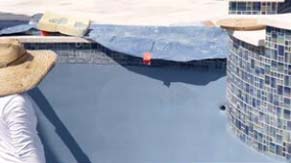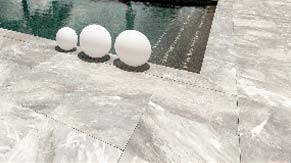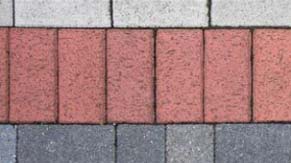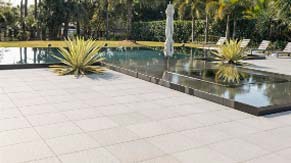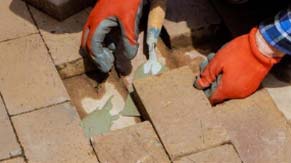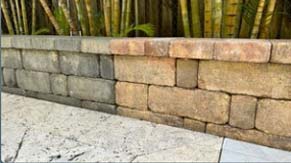Understanding Your Salt Chlorine Generator
Dive into the world of salt water pools and discover how a salt chlorine generator simplifies pool maintenance. This class demystifies the process, explaining that a "saltwater pool" is, in essence, still a chlorine pool, but with the added convenience of on-site chlorine production. We'll explore the ingenious mechanism of the salt cell, where ordinary salt (sodium chloride) is transformed into the sanitizer your pool needs.
Understanding the electrolysis process within the salt cell is key to appreciating its efficiency. This video will guide you through the essential maintenance steps for your salt cell, including how often to clean it and the proper method using a diluted muriatic acid solution. Learn to identify the flow direction and ensure correct reinstallation to keep your system running smoothly and your pool sparkling clean.
What You'll Learn in Pool School:
-
The fundamental difference between traditional and salt water chlorine pools.
-
How a salt chlorine generator produces chlorine through electrolysis.
-
Step-by-step instructions for cleaning your salt cell to prevent calcium buildup.
-
The correct dilution ratio for muriatic acid when cleaning a salt cell.
-
Importance of proper flow direction and reinstallation of the salt cell.
-
Tips for regular maintenance to ensure the longevity and efficiency of your salt system.
How Salt Chlorine Generators Work
A salt chlorine generator, often referred to as a salt cell, is a marvel of modern pool technology. Instead of manually adding liquid chlorine, you add pool-grade salt (sodium chloride) to your water. As this saltwater passes through the salt cell, an electrical current (electrolysis) is applied to metal fins inside. This process breaks down the sodium chloride, producing chlorine gas (which sanitizes your pool) and sodium hydroxide (which returns to the pool). This continuous, on-demand chlorine production results in softer water and less irritation for swimmers.
Cleaning and Maintenance of Your Salt Cell
Regular cleaning of your salt cell is crucial to prevent calcium buildup on its metal fins, which can impede its efficiency. The video recommends checking your cell every one to three months. To clean, first shut off all pool equipment and unplug the unit. Then, carefully loosen the two unions connecting the cell. For cleaning, use a 4:1 solution (four parts water to one part muriatic acid) in a 5-gallon bucket. Submerge the cell in this solution to dissolve calcium deposits, then rinse thoroughly.
Pro Tips for Salt Water Pool Owners
-
Monitor Salt Levels: Regularly test your pool's salt concentration to ensure it's within the manufacturer's recommended range for optimal chlorine production.
-
Inspect Cell Regularly: Visually inspect your salt cell for calcium buildup every 1-3 months, or more frequently if you have hard water.
-
Proper Acid Dilution: Always use the recommended 4:1 water-to-acid ratio for cleaning the salt cell to avoid damage.
-
Ensure Correct Flow: When reinstalling the salt cell, pay attention to the "flow" arrows on the unit to ensure water passes through in the correct direction.
-
Shut Off Power: Always turn off all pool equipment and unplug the salt cell before performing any maintenance.
Key Takeaways
-
Salt water pools use a generator to produce chlorine on-site, offering a more convenient sanitization method.
-
Regular cleaning of the salt cell with a diluted muriatic acid solution is essential for efficiency.
-
Proper installation and flow direction are critical for the salt cell's operation.
-
Understanding the electrolysis process helps in troubleshooting and maintaining your system.
-
Consistent monitoring and maintenance extend the life of your salt chlorine generator.
Why Choose Apex Pool School?
With over 20 years of experience in pool maintenance and construction, Apex Pool School offers the most comprehensive and practical pool education available. Our expert-led courses combine theoretical knowledge with hands-on techniques used by professional pool technicians.
Frequently Asked Questions
Here are some common questions about pool maintenance. If you have other questions, feel free to contact us.
A salt water pool uses a salt chlorine generator to convert salt into chlorine, which then sanitizes the pool water. This process continuously produces chlorine, reducing the need for manual chlorine addition.
You should use pure, non-iodized salt specifically designed for swimming pools. Avoid salts with anti-caking agents or other additives, as these can damage your generator and stain your pool.
Salt is not consumed during the chlorine generation process, so you typically only need to add salt to replace what is lost through splash-out, backwashing, or draining. Test your salt levels regularly.
Salt water pools offer a softer feel to the water, are less irritating to eyes and skin, and eliminate the need to store and handle harsh chlorine chemicals. They also provide continuous sanitization.



